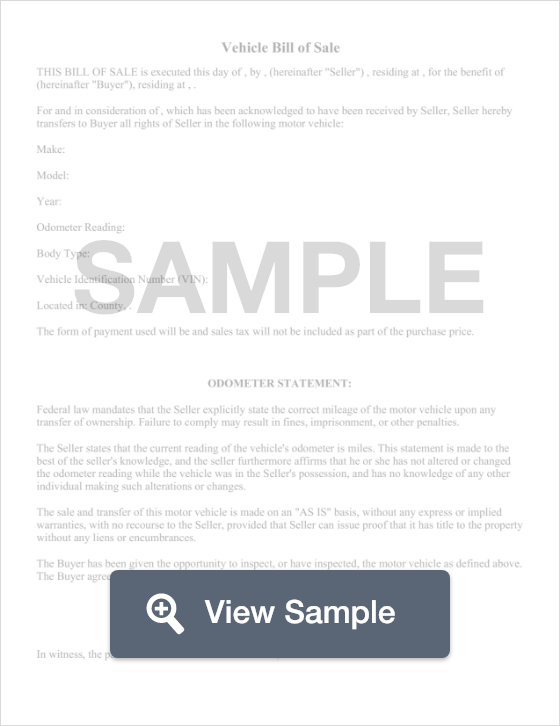Additional Vehicle Bill of Sale Forms & Laws by State
The following states require a bill of sale form when selling a vehicle:
- Arizona
- California
- Connecticut
- Florida
- Georgia
- Idaho
- Indiana
- Kansas
- Maryland
- Missouri
- Montana
- Nevada
- New Mexico
- New York
- North Dakota
- Oregon
- South Dakota
- Utah
- Vermont
- Virginia
- Washington
- West Virginia
The following states have less strict standards for the bill of sale forms when selling a vehicle:
Sample Vehicle Bill of Sale with Examples for Each Step
Step 1 - Buyer and Seller Information:
In this section, the form identifies the buyer and seller of the transaction. In this section, provide the date that the vehicle is being transferred. Besides, provide the seller’s name and full address. Once this information has been provided, input the buyer’s name, and full address.
Next, enter the total price of the vehicle that has been received by the seller.
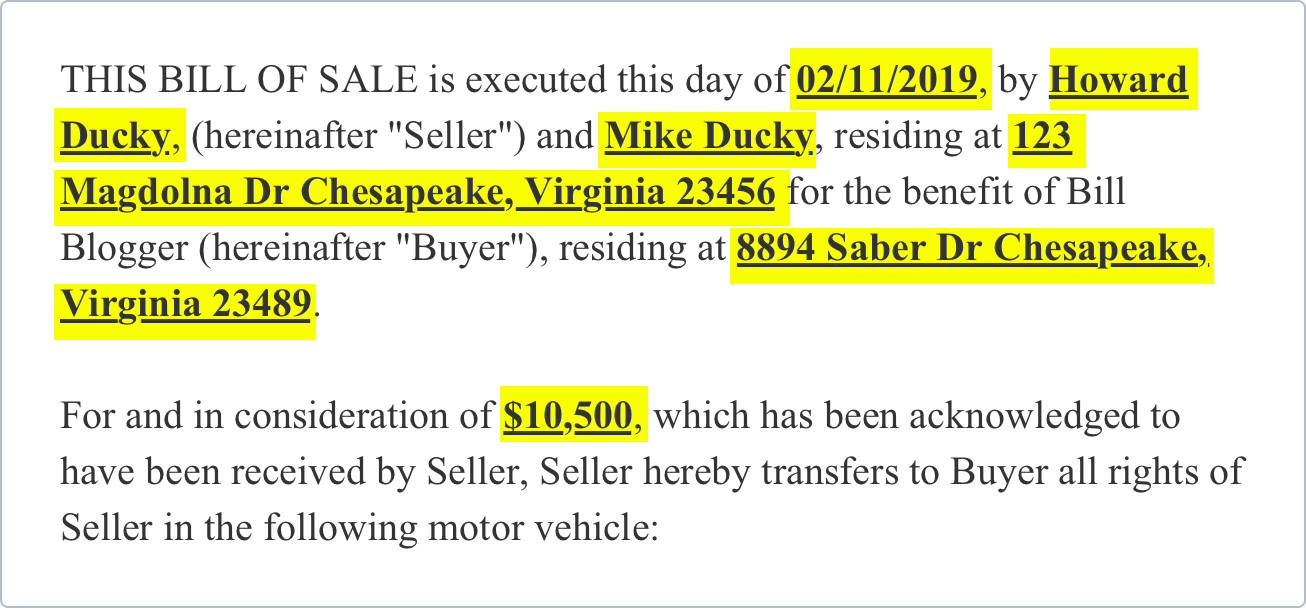
Step 2 - Vehicle Information
Enter the specific information about the vehicle. This includes the vehicle’s make, model, year, odometer, body type, VIN (Vehicle Identification Number) Number, and where the vehicle is being sold. Also, provide the form of payment that will be exchanged for the vehicle.
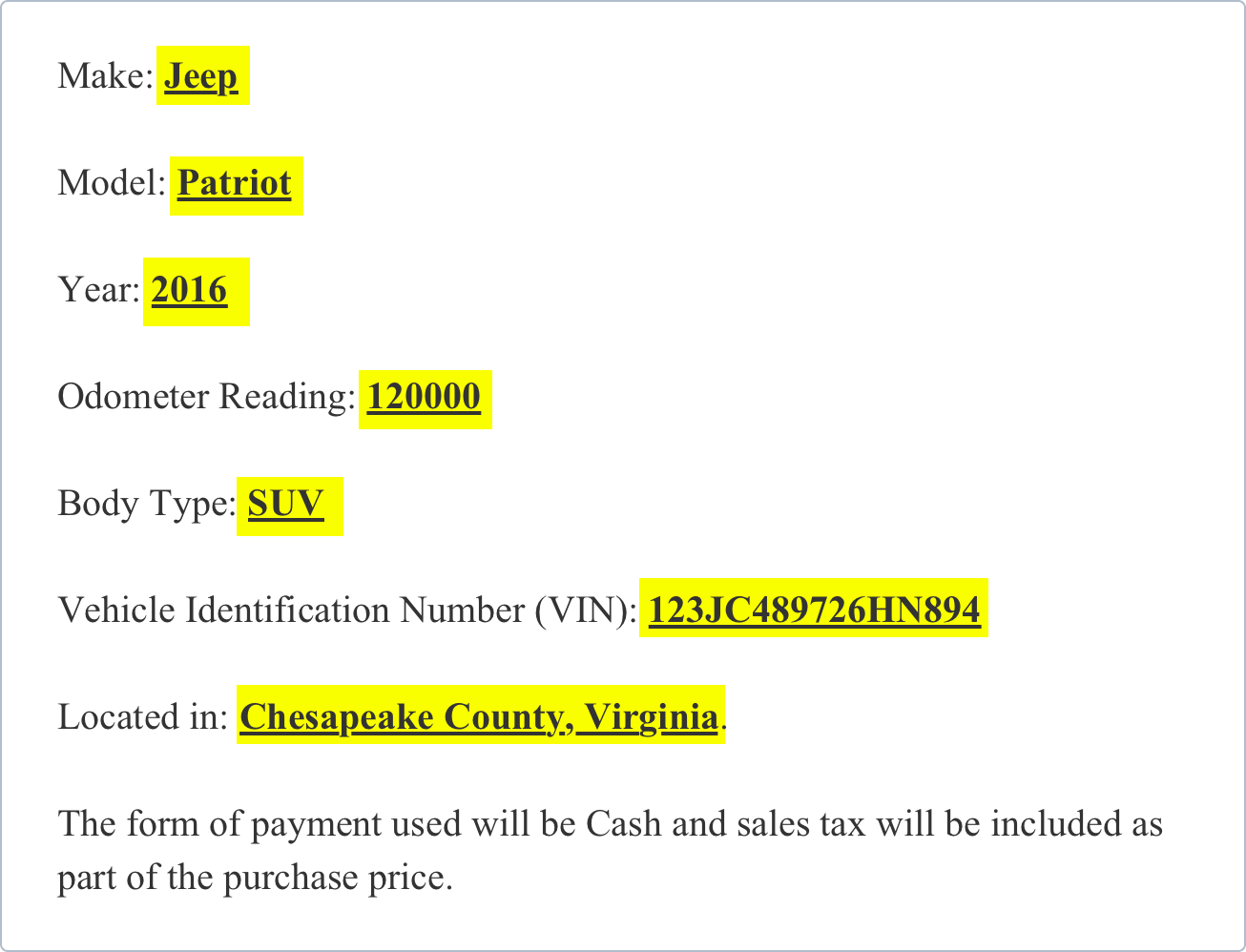
Step 3 - Odometer Statement
Enter the vehicle’s odometer reading. This statement certifies that this is the correct mileage of the vehicle to the best of the seller’s knowledge and that as far as he or she is aware, no alterations have been performed to the odometer reading.
Also, this section also allows the seller to declare whether or not the vehicle is being sold “As-Is”, without any warranties or if the vehicle will come with some sort of warranty. If the vehicle comes with a warranty, the seller may input the Limited Warranty Terms below.
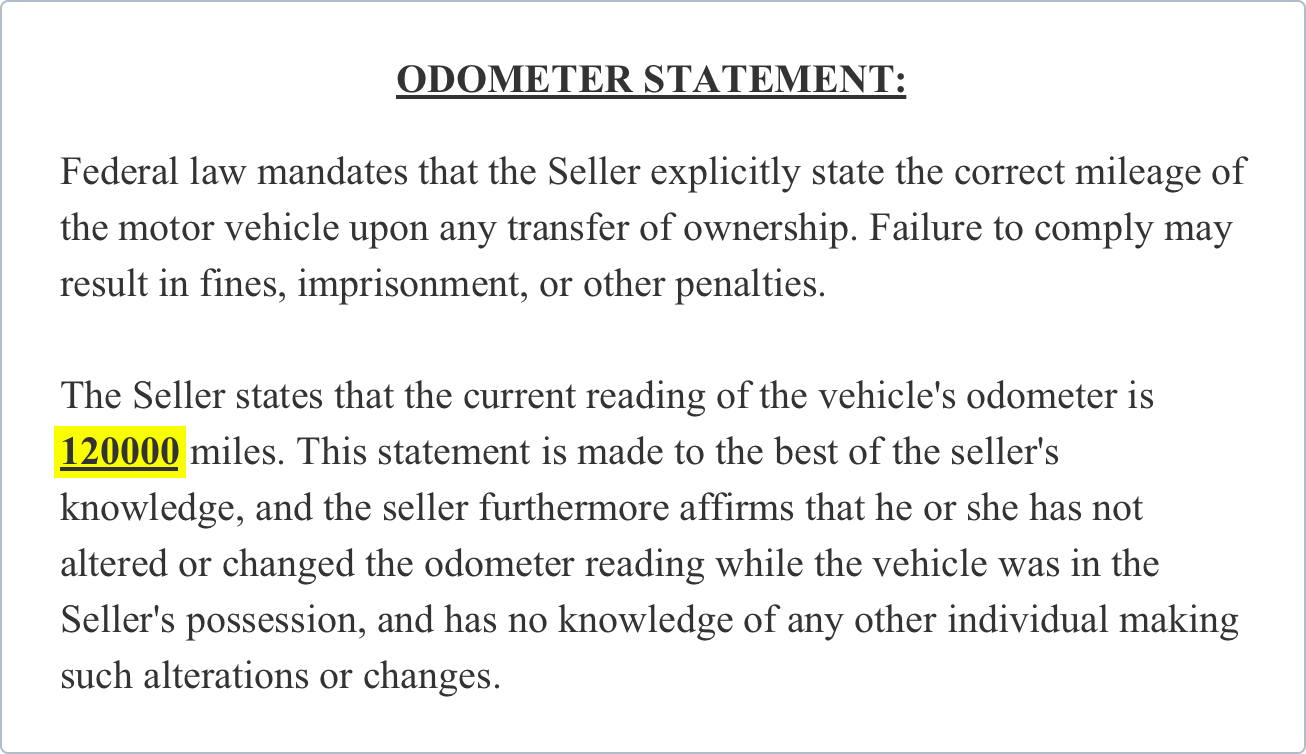
Step 4 - Signatures:
Declare the date that the vehicle transfer is being commenced. Once this date is declared, ensure that both the buyer and the seller sign and date the agreement.
If your state requires a Witness to attest the execution of this agreement, provide the following information of your Witness:
-
Name
-
Address
-
Date
-
Witness’ Signature
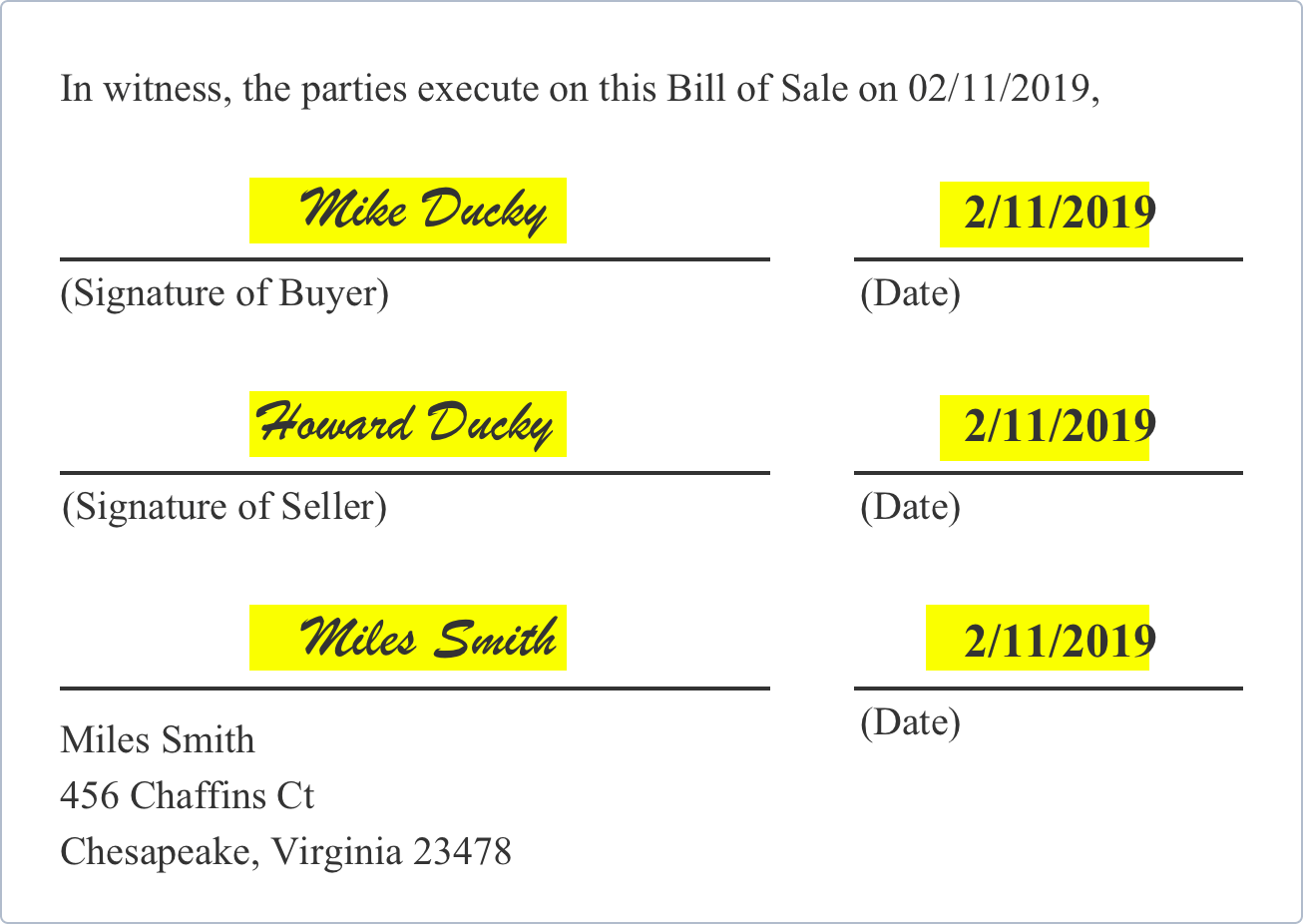
Download a PDF or Word Template
Vehicle Bill of Sale
If you're buying or selling a car, you need a vehicle bill of sale. This document records information about the buyer, the seller, and the vehicle being sold.
 Read More
Read More
Firearm Bill of Sale
A Firearm Bill of Sale is proof of sale of firearm(s) 'as is' to a customer by a seller. It acts as a receipt and includes seller information, details about the goods' current conditions and any faults, location of the sale, price, buyer details and method of payment. The firearm is explicitly sold in its current condition.
 Read More
Read More
Boat Bill of Sale
A Boat Bill Of Sale records relevant information about the exchange of ownership of a sea vessel. It establishes that the transaction is on an 'as is' basis i.e. the buyer accepts the boat with any potential imperfections and thus protects the seller from subsequent come back in the event of new problems arising with the purchase.
 Read More
Read More
Bill of Sale
A Bill of Sale is used for the transfer of ownership of property 'as is' in return for a fee. The 'as is' is key, in so much that the buyer explicitly accepts the goods in the condition in which they find them. This protects the seller from any subsequent problems that may arise.
 Read More
Read More
